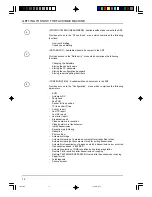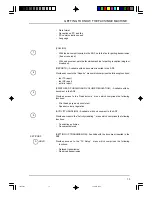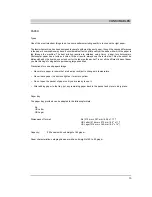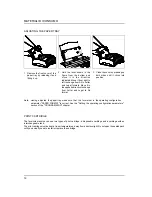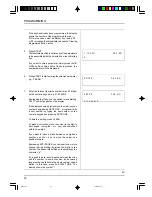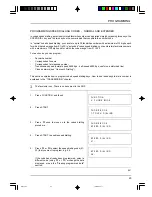
24
PROGRAMMING
S P E E D D I A L
F A X
0 6 :
E N T E R
F A X N O .
0 1 2 5 4 5 8 1 2
6.
Press START .
The facsimile is automatically set for entry of the data
to be associated with the selected speed dialling
code.
If you want to skip a parameter, simply press the
∨
∨
or
∧∧
key. Each time the key is pressed, the next parameter
will be displayed.
7.
Press START to start setting the parameter selected,
e.g. “FAX NO."
8.
Enter the relevant facsimile number - max. 32 digits
- on the numeric keypad, e.g. 0125 45812.
Remember that numbers associated with the
extended speed dialling codes 31 and 32 may consist
of 100 digits.
By pressing the key, you can switch to tone dialling.
The " " symbol appears on the display.
If the display shows a previously set number, you can
confirm it by pressing SET/CONF. , or replace it with
a new number by typing the new number on the
numeric keypad and pressing SET/CONF .
To delete a setting, press CLEAR .
To make a correction, move the cursor to the digit to
be changed (using the < or > keys) and overwrite it
with the new digit.
If you want to insert a blank between one digit and
another, press the > key to move the cursor one
position forward.
By pressing EXT./PAUSE you can insert one or
more pauses (during dialling) between the digits in
the number. The pause is identified on the display by
the character “p”. It is a good idea to insert a pause
between the code and the number.
In some countries, a second answering tone must be
heard before the whole number can be dialled. In this
case, press 2nd DIAL TONE . The display shows the
symbol “:”.
If the facsimile machine is connected to an exchange
and the user is an external user, press EXT./PAUSE
before entering the number. In this case the display
shows the letter “E” before the numeric sequence.
+
∗
∗
cap05.p65
13/04/00, 22.17
24



